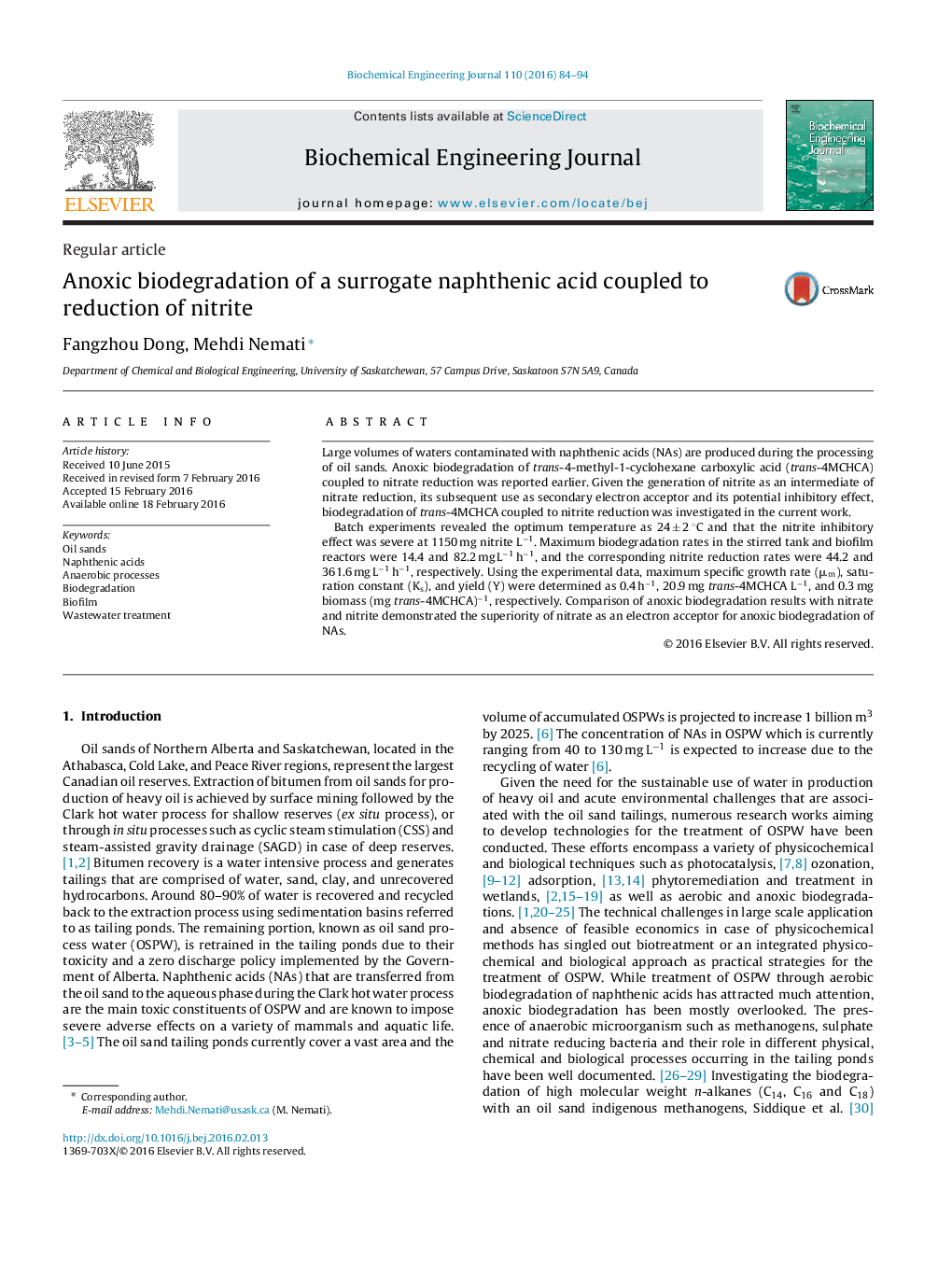| Article ID | Journal | Published Year | Pages | File Type |
|---|---|---|---|---|
| 6483944 | Biochemical Engineering Journal | 2016 | 11 Pages |
Abstract
Batch experiments revealed the optimum temperature as 24 ± 2 °C and that the nitrite inhibitory effect was severe at 1150 mg nitrite Lâ1. Maximum biodegradation rates in the stirred tank and biofilm reactors were 14.4 and 82.2 mg Lâ1 hâ1, and the corresponding nitrite reduction rates were 44.2 and 361.6 mg Lâ1 hâ1, respectively. Using the experimental data, maximum specific growth rate (μm), saturation constant (Ks), and yield (Y) were determined as 0.4 hâ1, 20.9 mg trans-4MCHCA Lâ1, and 0.3 mg biomass (mg trans-4MCHCA)â1, respectively. Comparison of anoxic biodegradation results with nitrate and nitrite demonstrated the superiority of nitrate as an electron acceptor for anoxic biodegradation of NAs.
Related Topics
Physical Sciences and Engineering
Chemical Engineering
Bioengineering
Authors
Fangzhou Dong, Mehdi Nemati,
